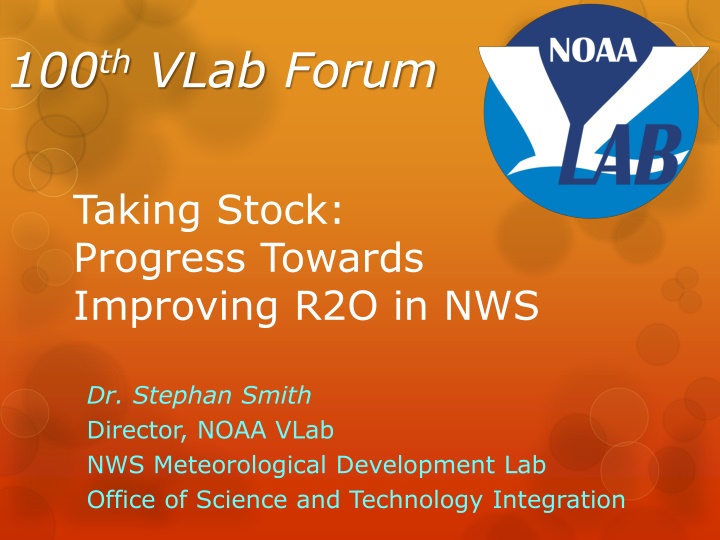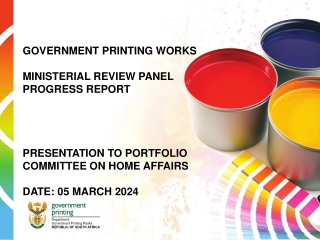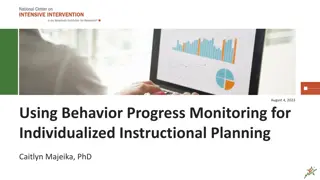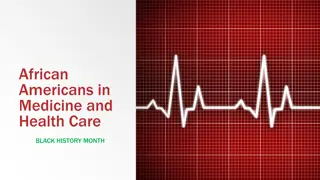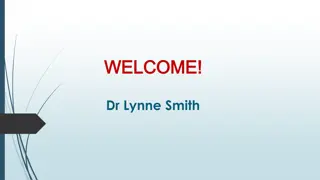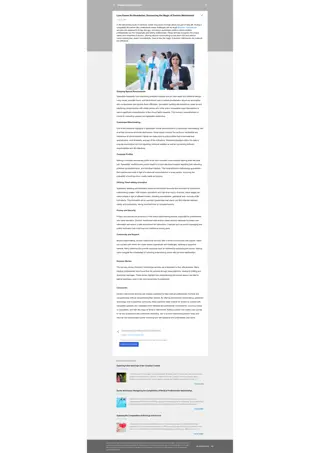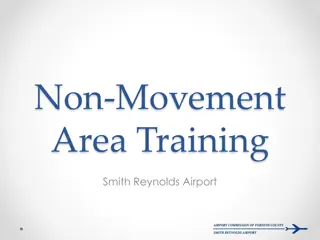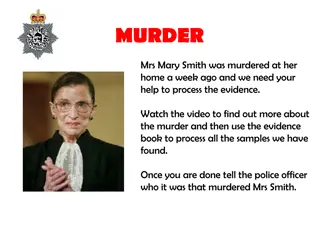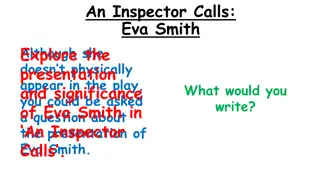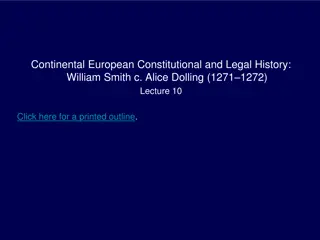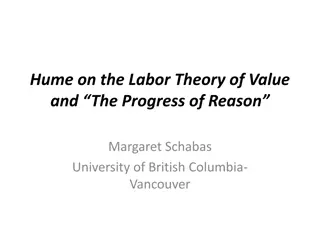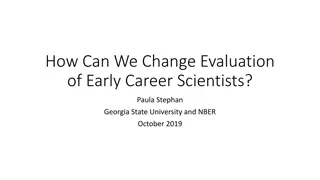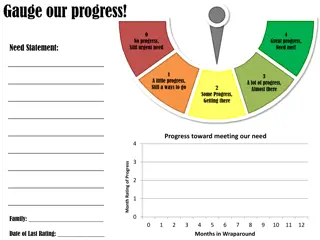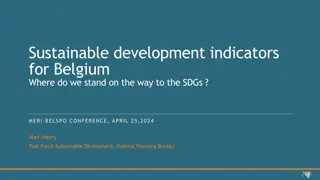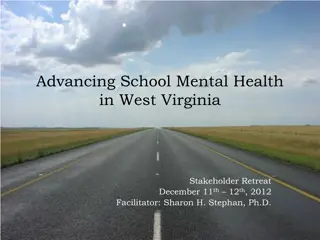Progress Towards Improving R2O in NWSDr. Stephan Smith
In the 100th VLab forum, Dr. Stephan Smith, Director at NOAA VLab, discusses progress made in improving R2O in NWSDr. Explore insights on enhancing meteorological development for better science and technology integration.
Download Presentation

Please find below an Image/Link to download the presentation.
The content on the website is provided AS IS for your information and personal use only. It may not be sold, licensed, or shared on other websites without obtaining consent from the author.If you encounter any issues during the download, it is possible that the publisher has removed the file from their server.
You are allowed to download the files provided on this website for personal or commercial use, subject to the condition that they are used lawfully. All files are the property of their respective owners.
The content on the website is provided AS IS for your information and personal use only. It may not be sold, licensed, or shared on other websites without obtaining consent from the author.
E N D
Presentation Transcript
100th VLab Forum Taking Stock: Progress Towards Improving R2O in NWS Dr. Stephan Smith Director, NOAA VLab NWS Meteorological Development Lab Office of Science and Technology Integration
NWS R2O: A Strategic Concern NWS Strategic Plan 2000-2005: Reduce the time required to implement proven research and technology into operations NWS Strategic Plan 2011: Develop, in partnership with the research community, common modeling and operating infrastructures as well as test beds to facilitate scientific and technological development and to accelerate the transition of research into operations
National Academy of Public Administration (NAPA) Study (2013) To ensure that NWS Research to Operations (R2O) and Operations to Research (O2R) receive appropriate priority and support, the Panel recommends that it consolidate the current distributed management of this function.
What has been brought to bear on R2O since 2009? NOAA Testbed and Proving Ground Committee STI Portfolio OSTI Headquarters office NOAA Line Office Transition Managers Committee R2O Policy NAO 216-105 NWS Directive 80-8 NWS Operations Proving Ground NOAA Virtual Lab NWS Governance SOO-DOH Projects R2O Funding Opportunities: E.g. RTAP, USWRP, CSTAR, QWAQ, JTTI, etc Weather Research and Forecasting Innovation Act NWS Evolve Program Management Office Unified and Community Modeling
From September 2015 National SOO-DOH Meeting College Park, Maryland CULTURE CULTURE PEOPLE PEOPLE CAPACITY CAPACITY Three Key Factors to Successful R2O
PEOPLE PEOPLE Skilled in application of new science and technology CULTURE CULTURE Transparency, collaboration, and commitment to transition CAPACITY CAPACITY Efficient and adaptable IT Infrastructure
KEY PARTNERSHIPS FOR FIELD-DRIVEN R20 From Talk-the-Talk to Walk-the-Walk
NWS SCIENCE AND TECHNOLOGY INTEGRATION CSTAR CSTAR RL 3 STI STI MDL MDL SOOs SOOs DOHs DOHs NCEP NCEP NWC NWC NOAA NOAA Testbeds Testbeds OPG OPG RL 8 NWS NWS RL 9 Operational Operational Units Units Coordinate and manage local research applications and R2O for national implementation Ensure consistency Bring discipline to the R2O process Development Assessment Implementation Service Delivery
VLab Growth (4 years) May 2014 - May 2018 sessions/week Collaboration Services 1,259 278 Development Services 3,402 458 9
VLab Status 1400 7000 1200 6000 1000 5000 800 4000 3000 600 2000 400 1000 200 0 0 Collaboration Services Users Development Services Users Communities Projects
Number of VLab Software Repositories 1200 1000 800 600 400 200 0
SOO-DOH projects 14 projects are currently active 4 projects are on track to be completed in FY19
Success Stories ProbSevere Near-Storm Environment Awareness (NSEA) Project Multi-Radar, Multi-Sensor (MRMS) NBM and RTMA Feedback Forums Weather Archive and Visualization Environment (WAVE) FV3GFS VLab Community and code management Satellite Training and Operations Resources (STOR) VLab community
PEOPLE PEOPLE Skilled in application of new science and technology CULTURE CULTURE Transparency, collaboration, and commitment to transition CAPACITY CAPACITY Efficient and adaptable IT Infrastructure
Where are we falling short? What opportunities exist? Backlog of RL8 projects awaiting implementation on major NWS operational systems (IDP, WCOSS, AWIPS). The O in NWS R2O generally means FISMA High, 24x7x365, and 99.99 uptime. This kind of operational system is expensive to maintain, inflexible to adapt, and slow to evolve. However, many potential R2O projects do not need this kind of a robust, high availability operating environment. O and M footprint growing inexorably. No formal sunsetting process in place. From Weather Act: A technology transfer initiative, carried out jointly and in coordination with the Director of the National Weather Service, and in cooperation with the United States weather industry and academic partners, to ensure continuous development and transition of the latest scientific and technological advances into operations of the National Weather Service and to establish a process to sunset outdated and expensive operational methods and tools to enable cost-effective transfer of new methods and tools into operations.
Take-aways Much tangible progress has been made towards improving NWS R2O over that last 9 years. We are doing much better at managing R2O and innovation within the agency. However, we are unable to onboard technically mature and scientifically validated R&D projects into operations at a sufficient pace, resulting in schedule delays and a growing backlog of projects waiting to transition. To alleviate this backlog, perhaps we need to consider establishing a tiered approach to NWS operations, rather than the current one-size fits all .
Questions? Thanks: Stephan.Smith@noaa.gov
